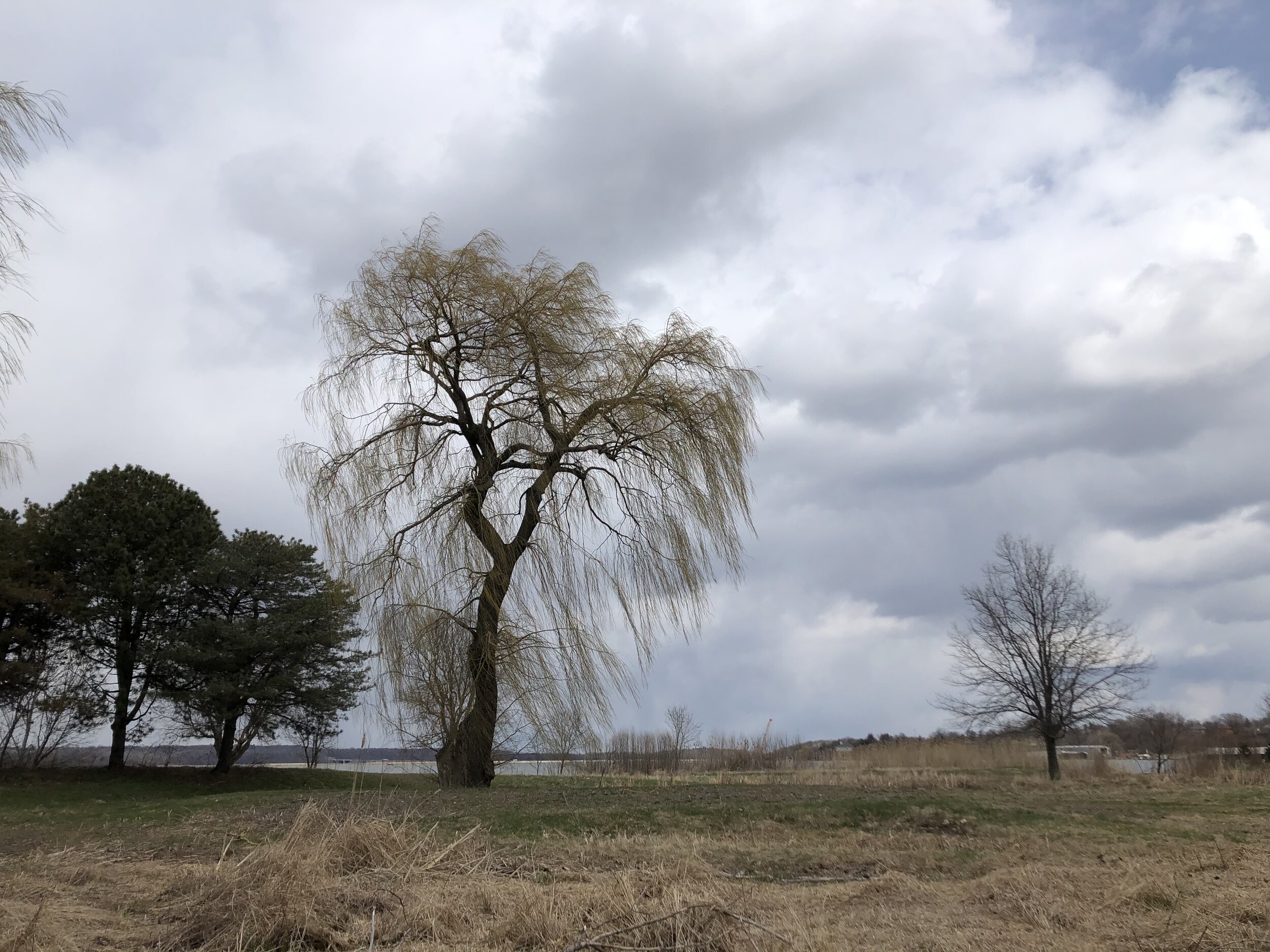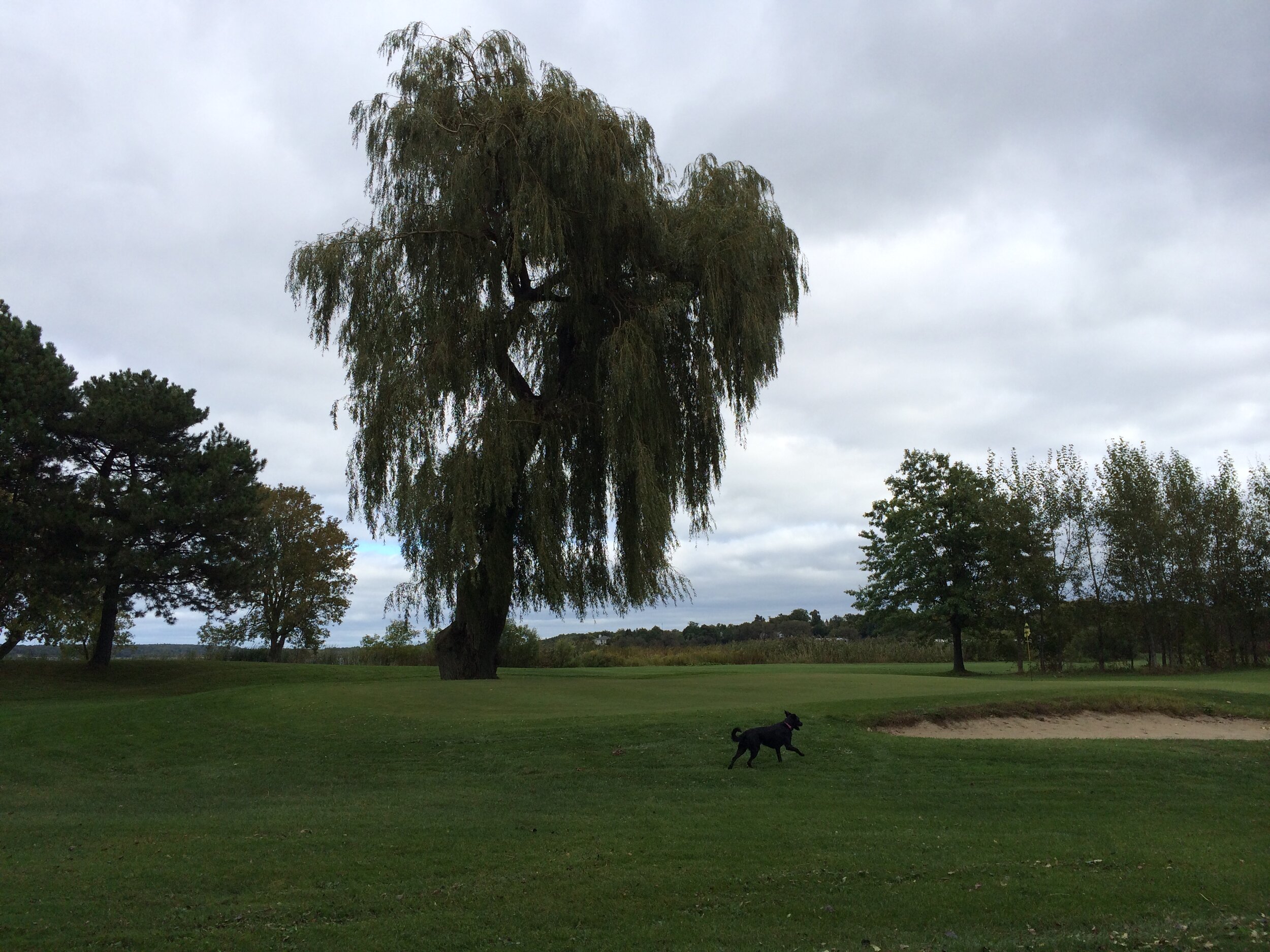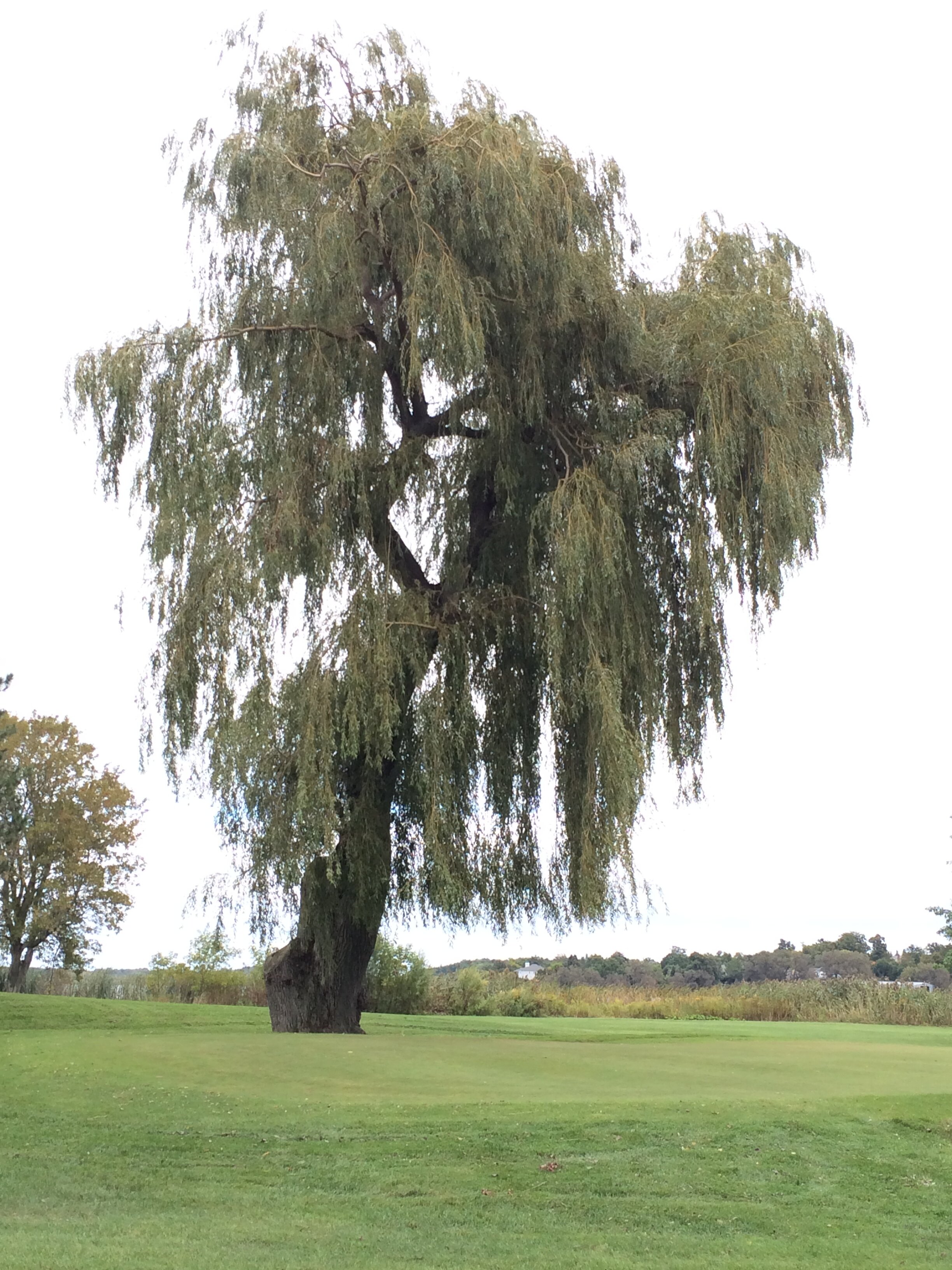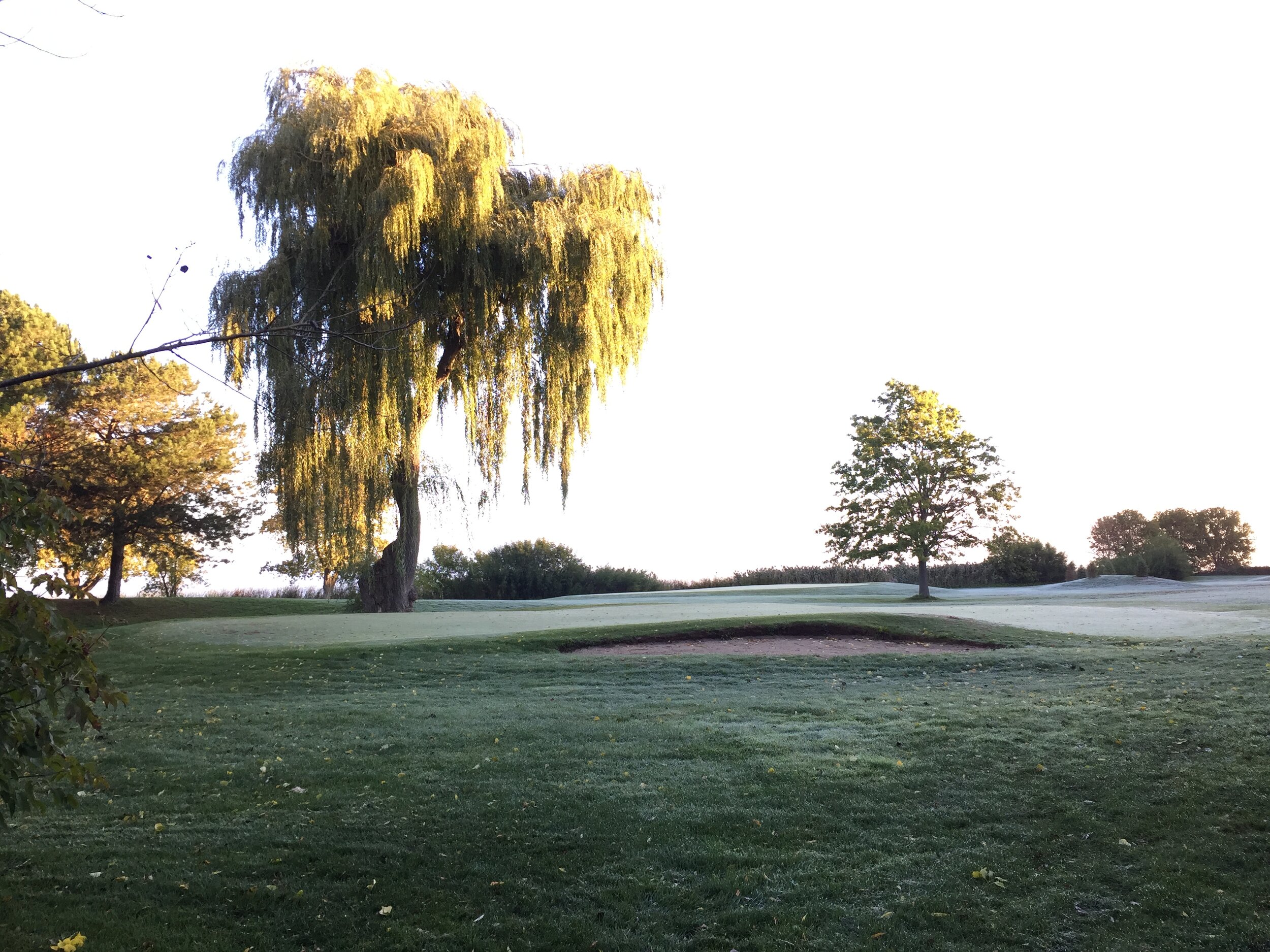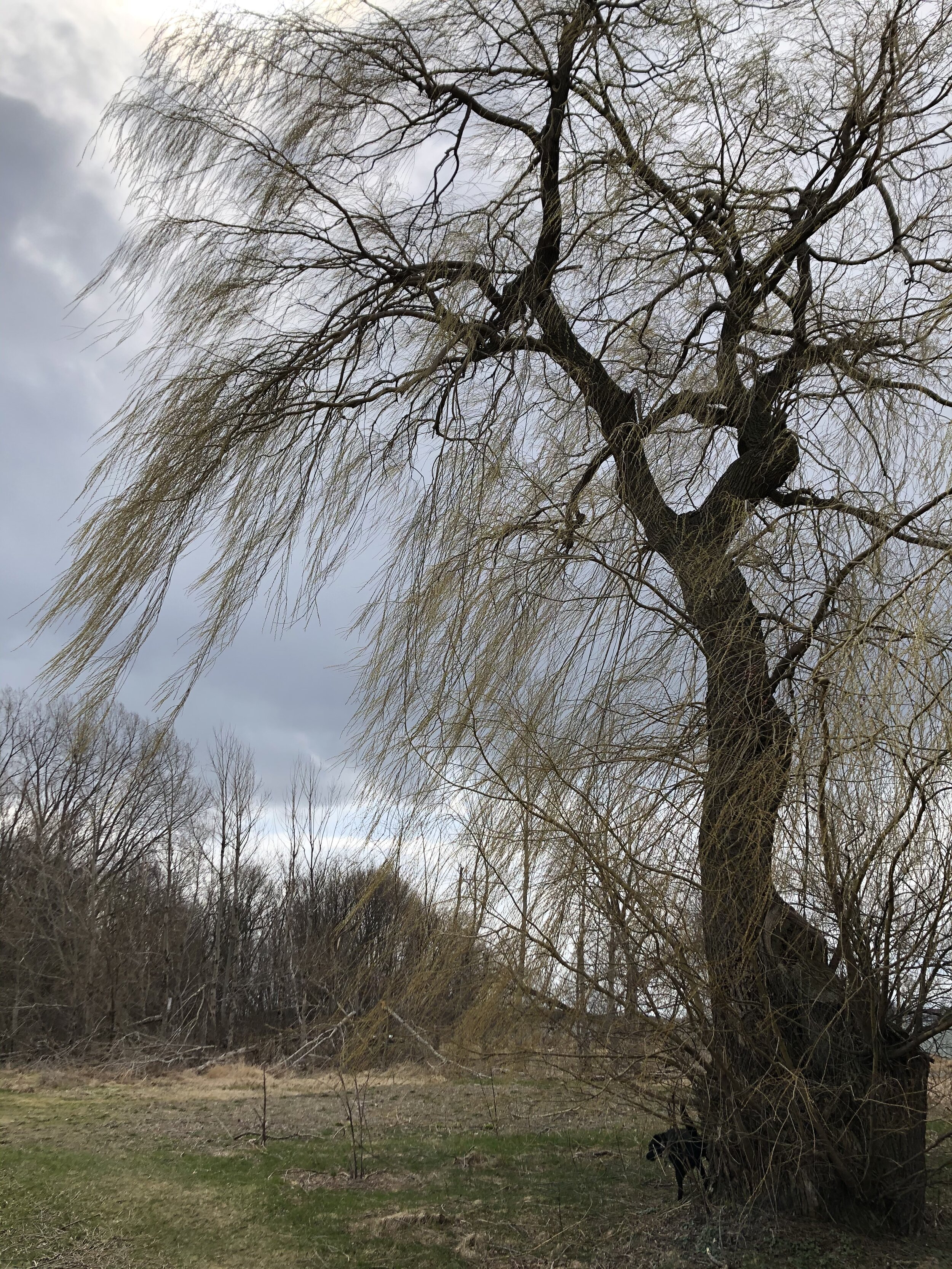Bioblitz May 2022
With the collaboration of local naturalist Hilbert Buist, informative talks by Profs. Chris Eckert and Steve Lougheed, and the enthusiastic support of many community members, we set out to document the plants, insects, birds, and other beings that inhabit the park over the course of a week in May. We used the app inaturalist and added hundreds of sightings to those already on record. We also held a session to acquaint folks with the totem pole. Here are a few photos of the week’s activities, and you might like to read Hilbert’s reflections on the Bioblitz, or a report and meditation by Alisha Piercy about the sound walk led by Matt Rogalsky.





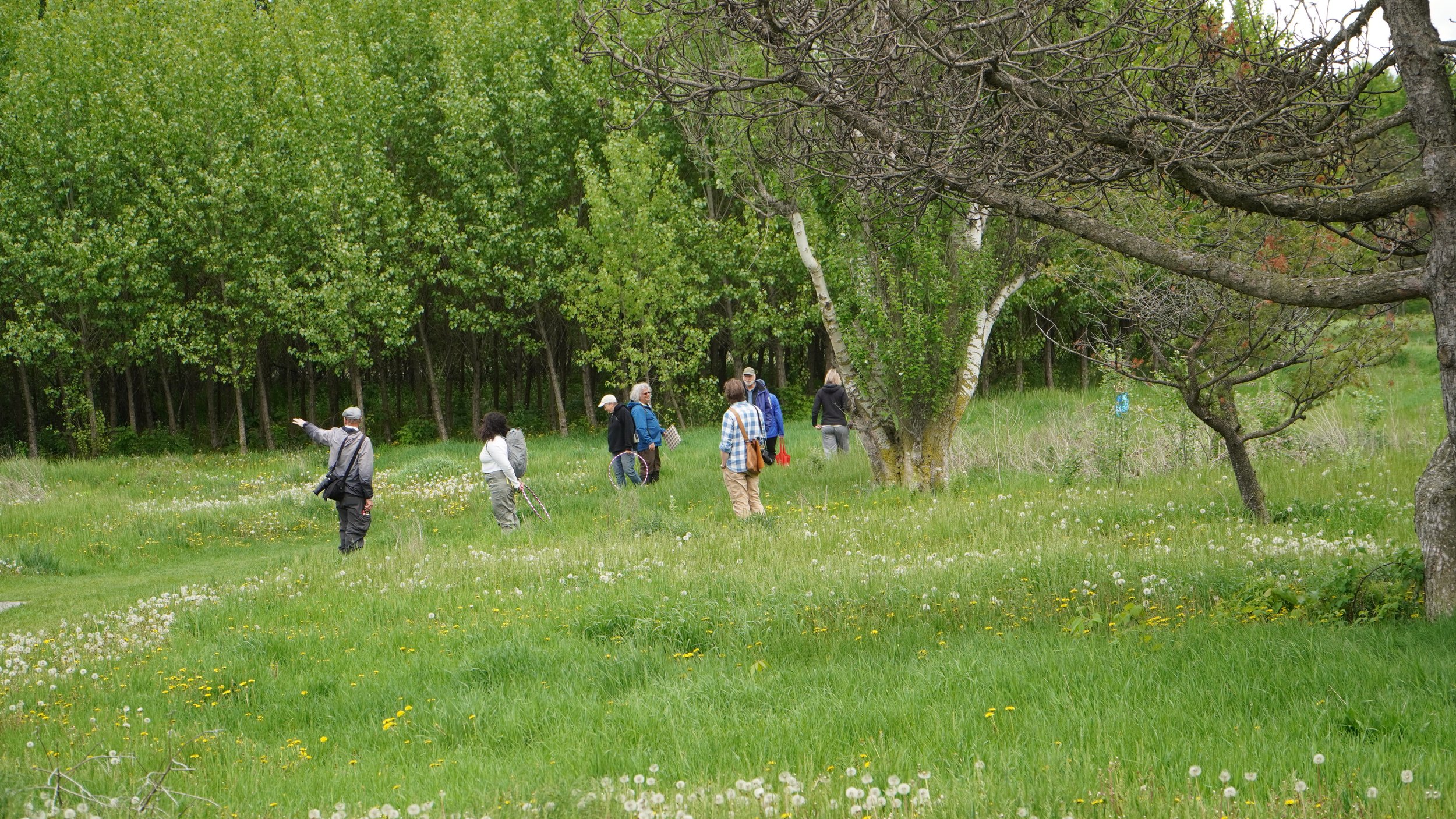
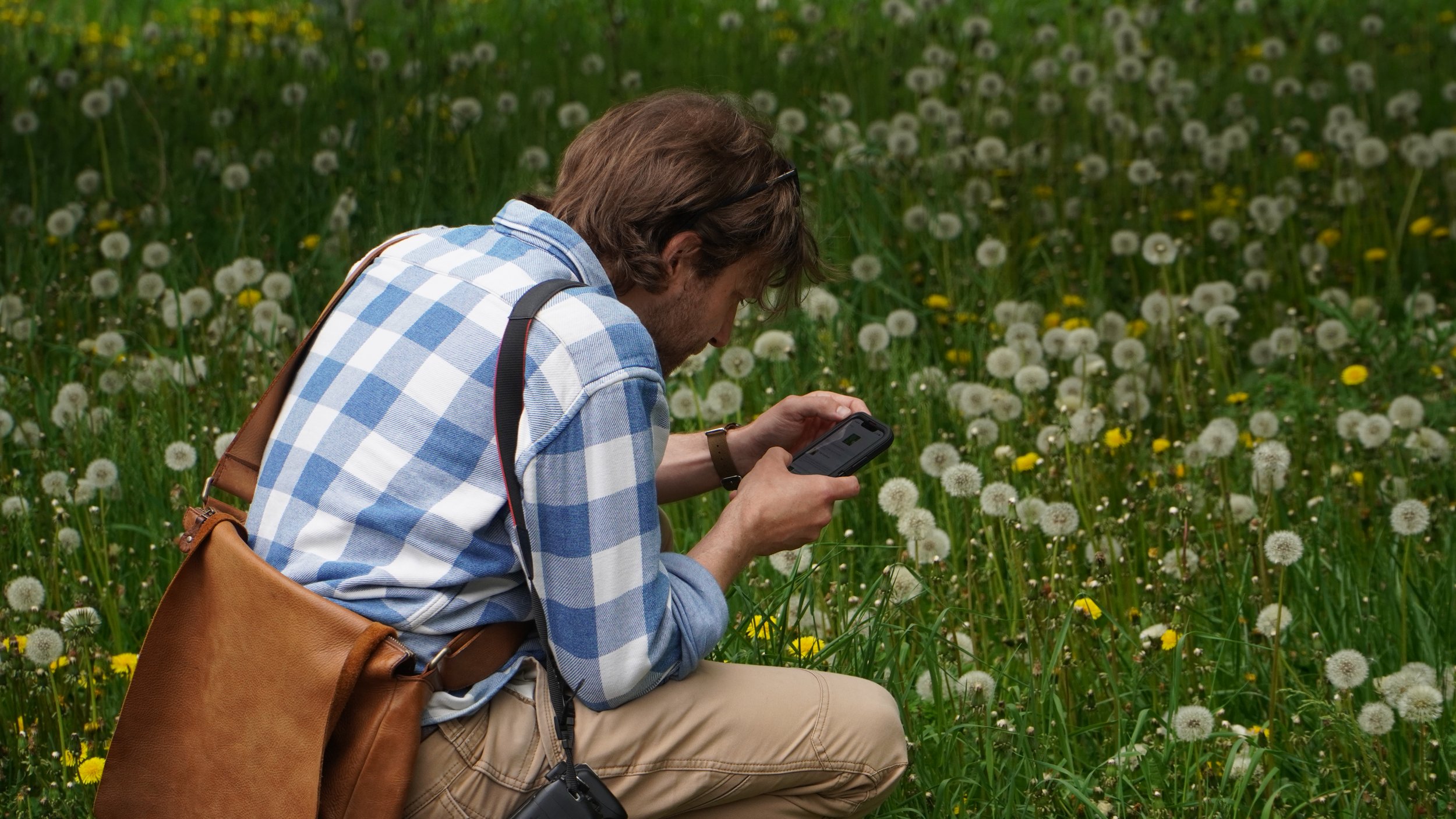

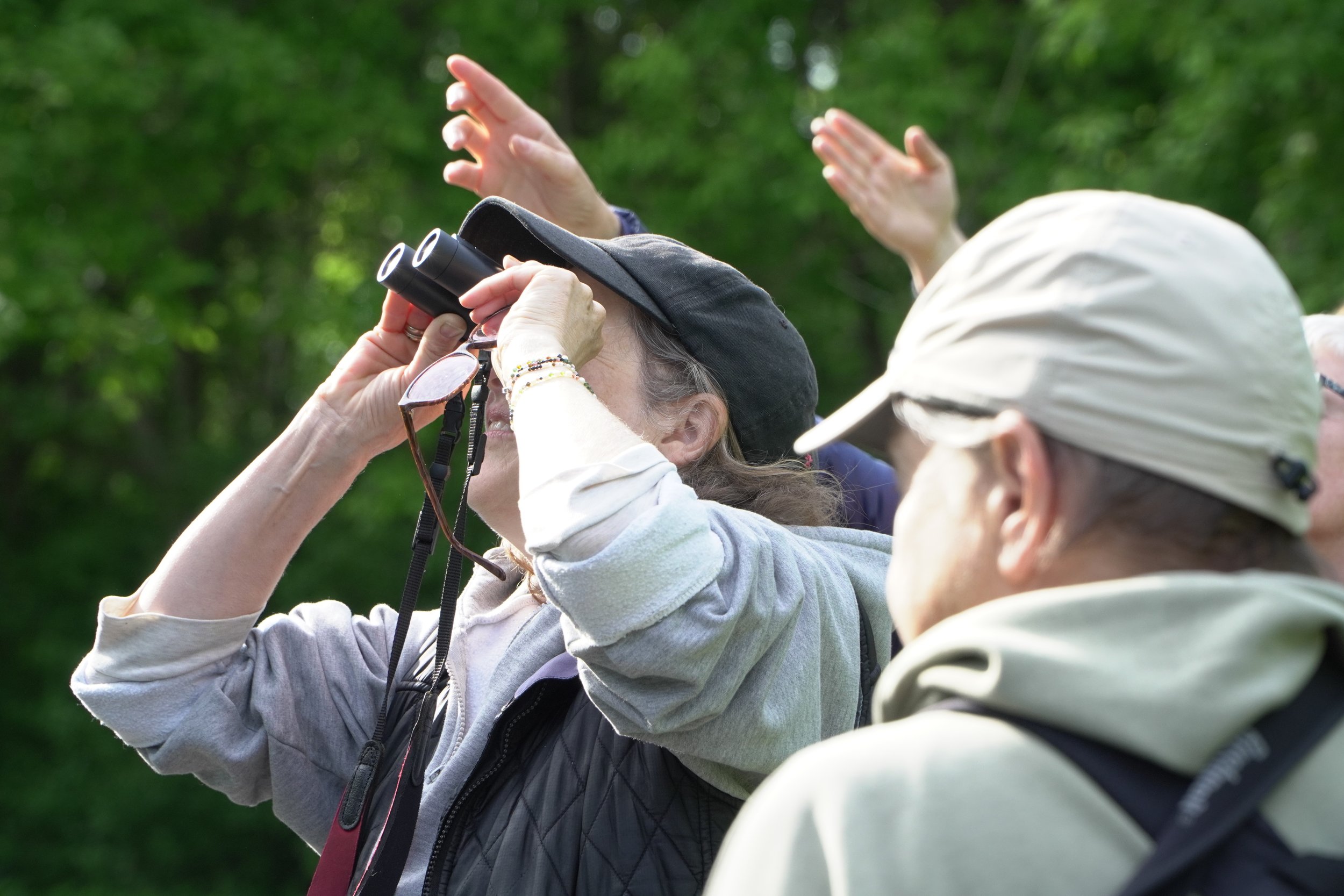
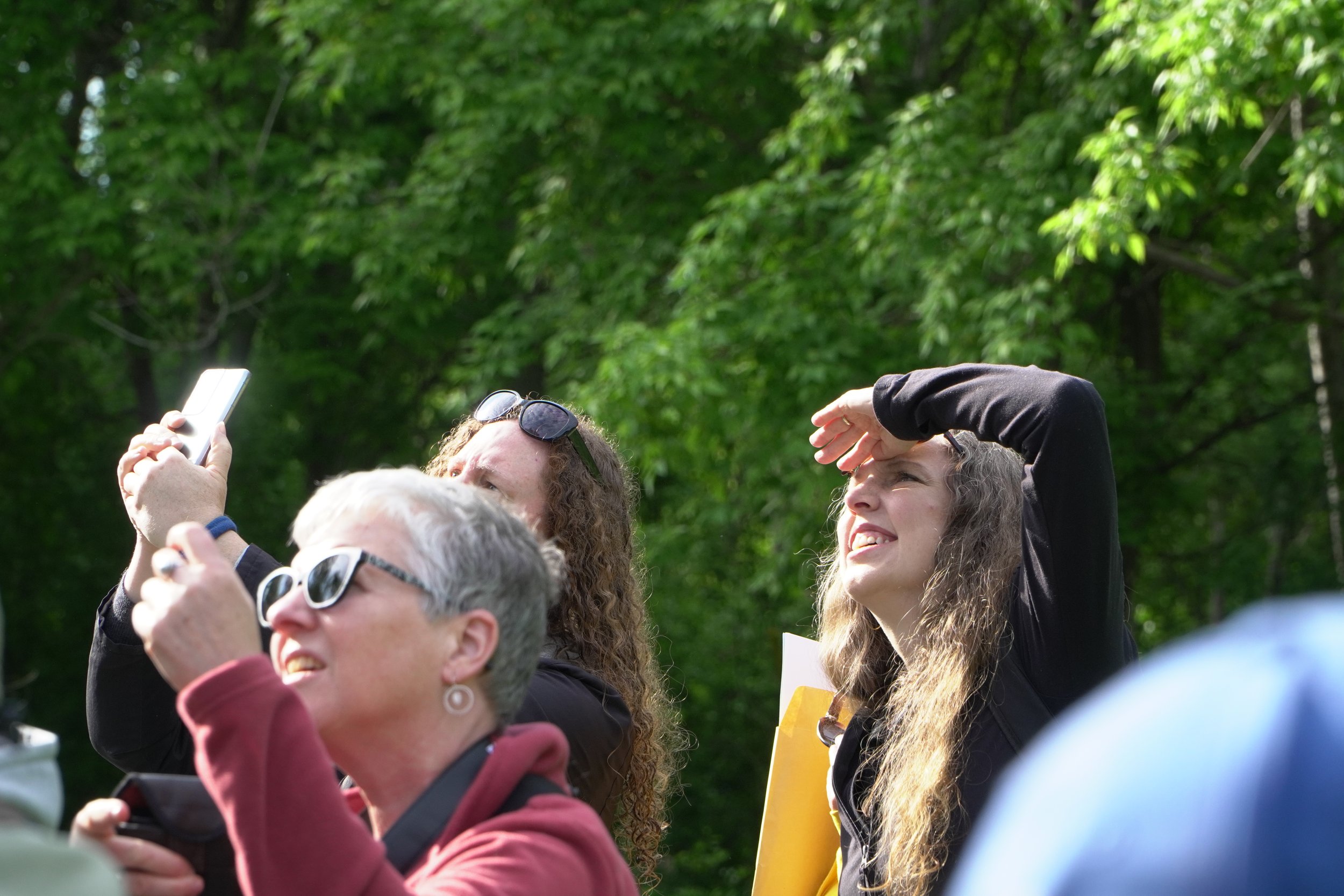
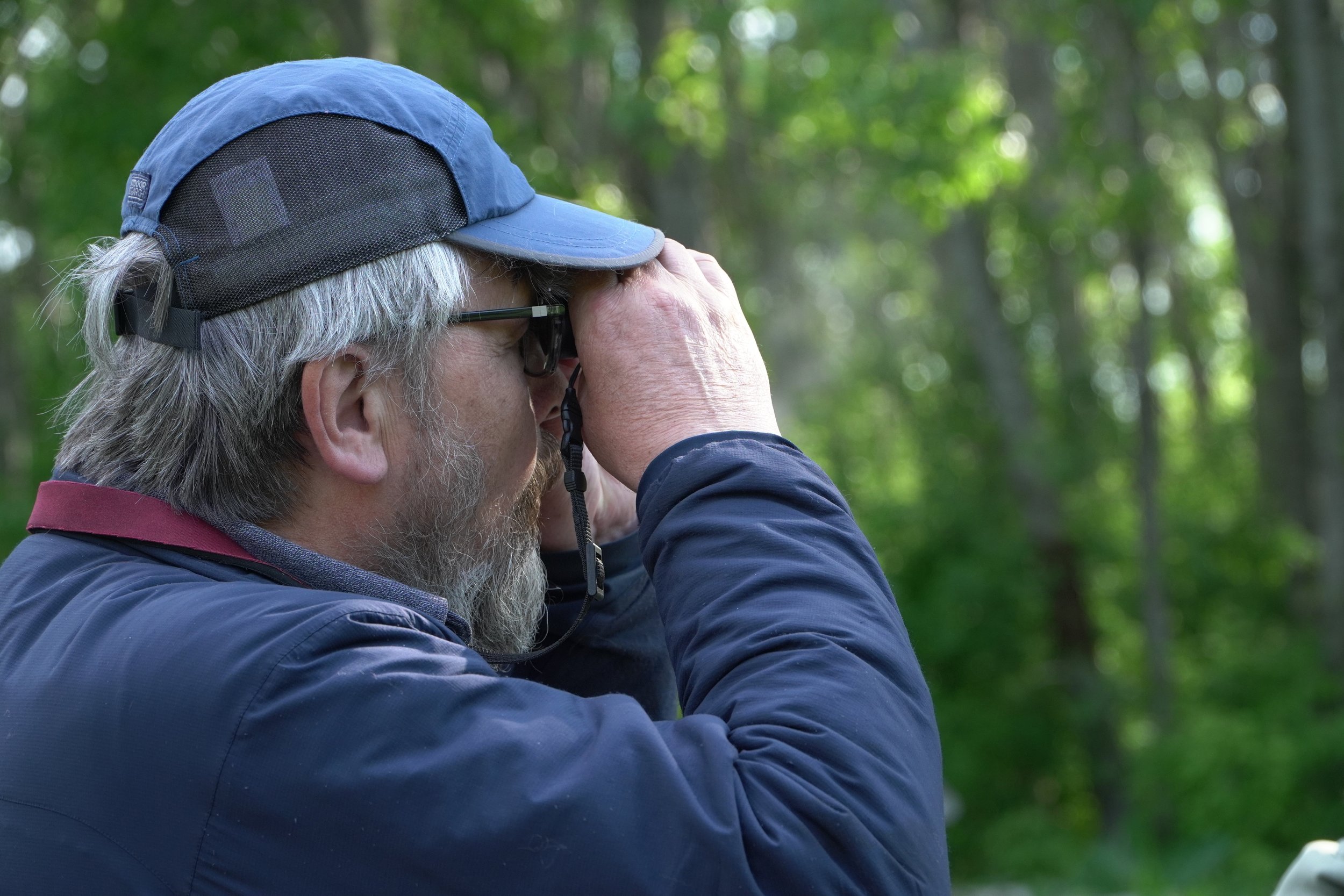


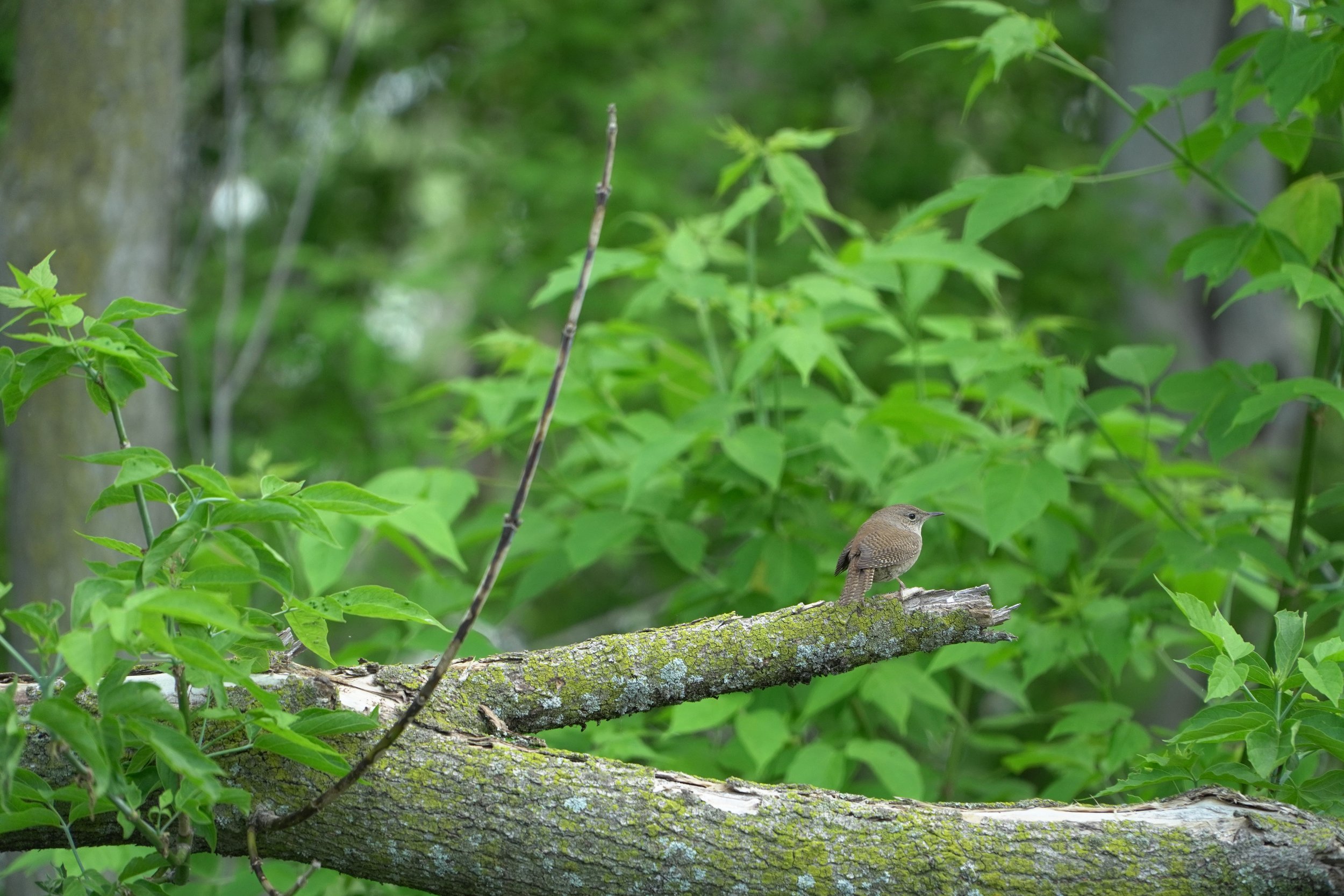




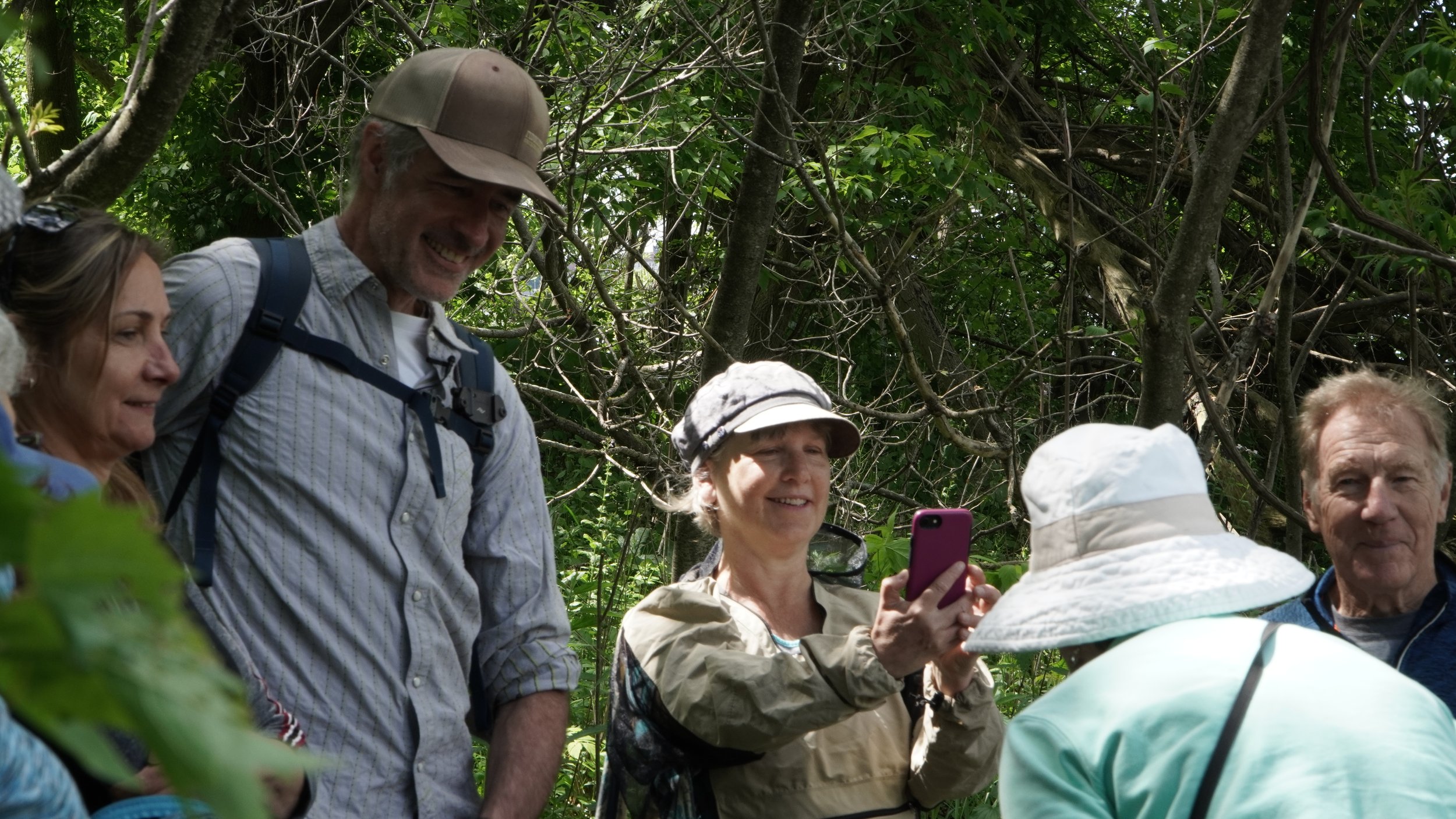
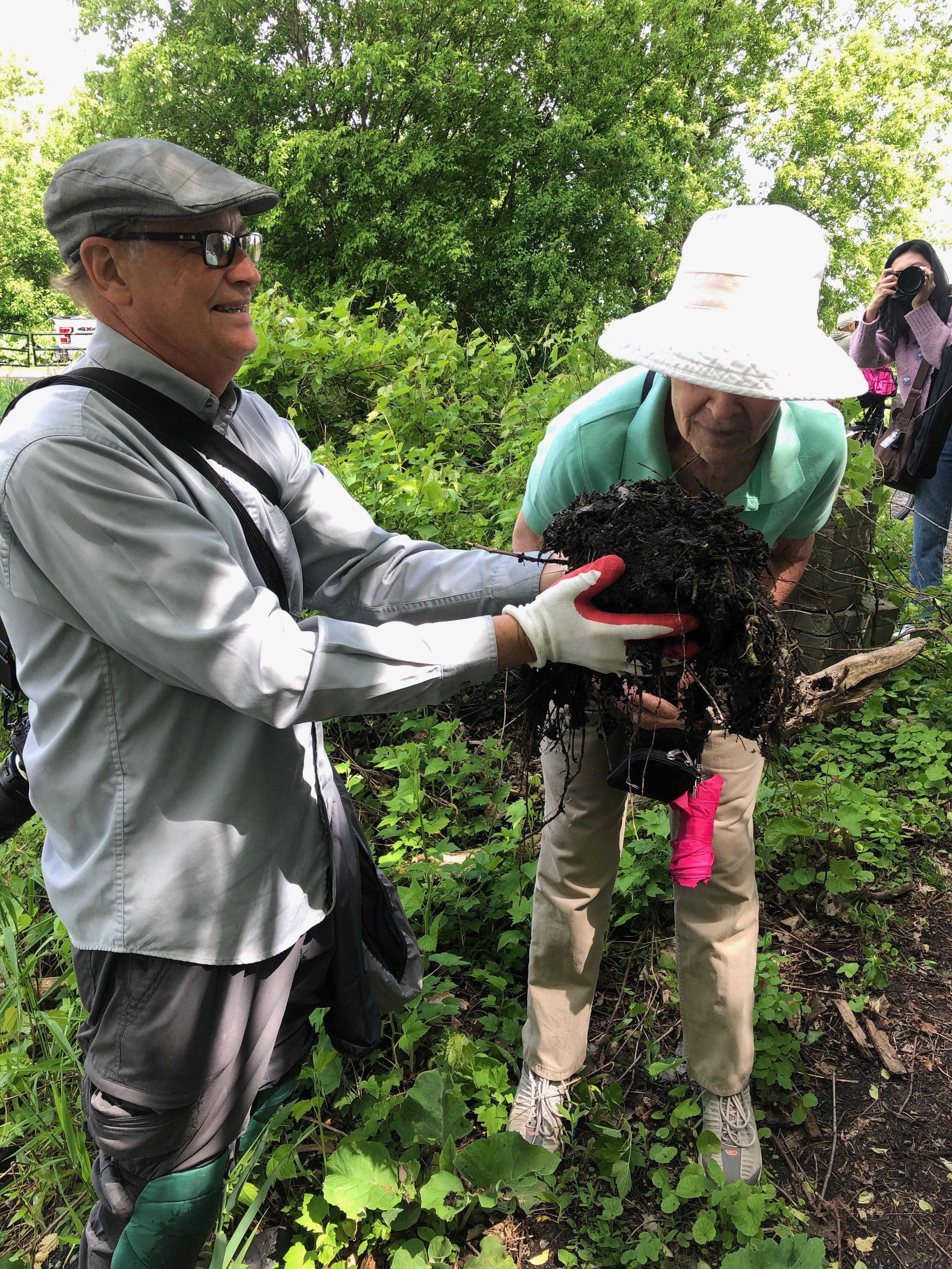

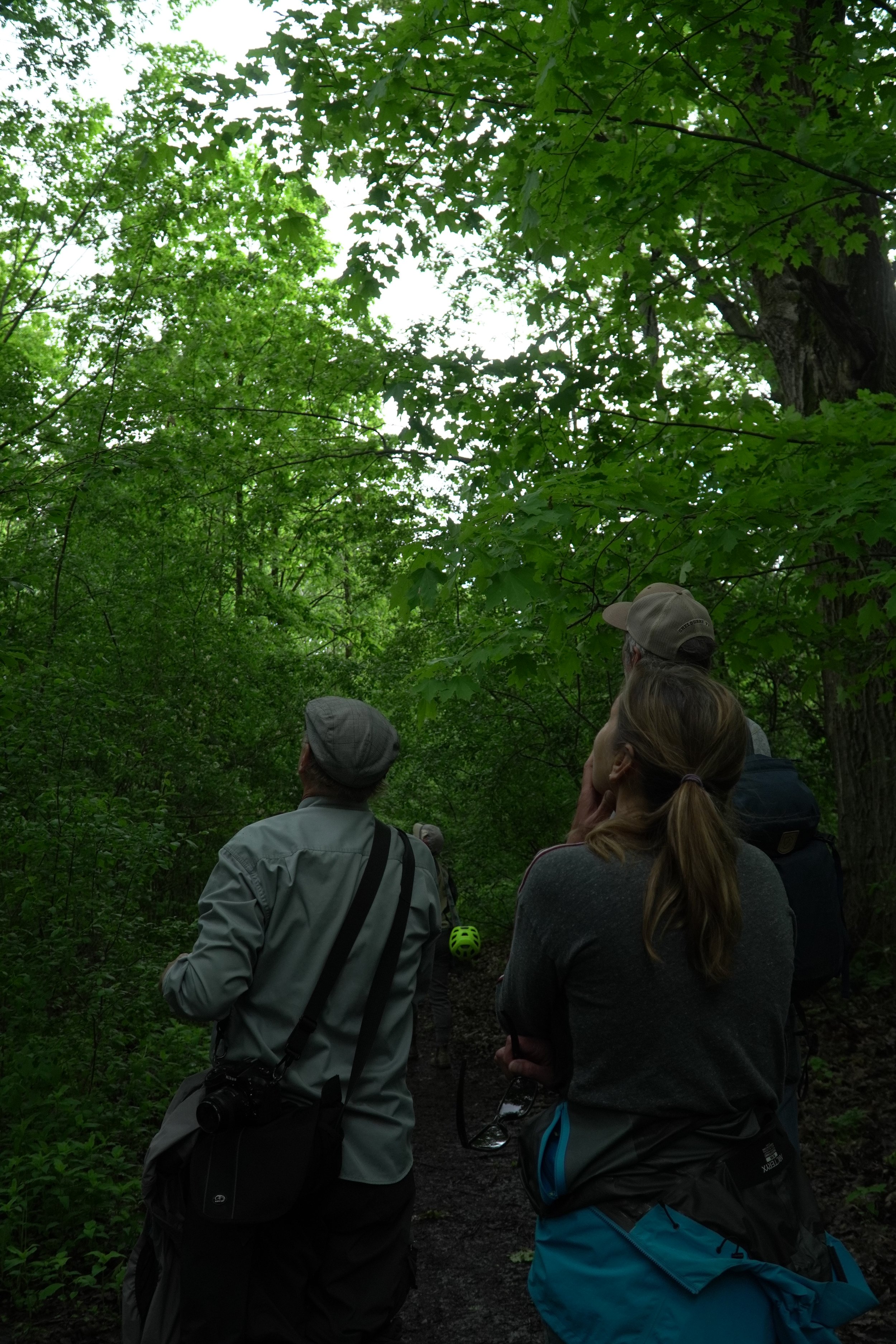

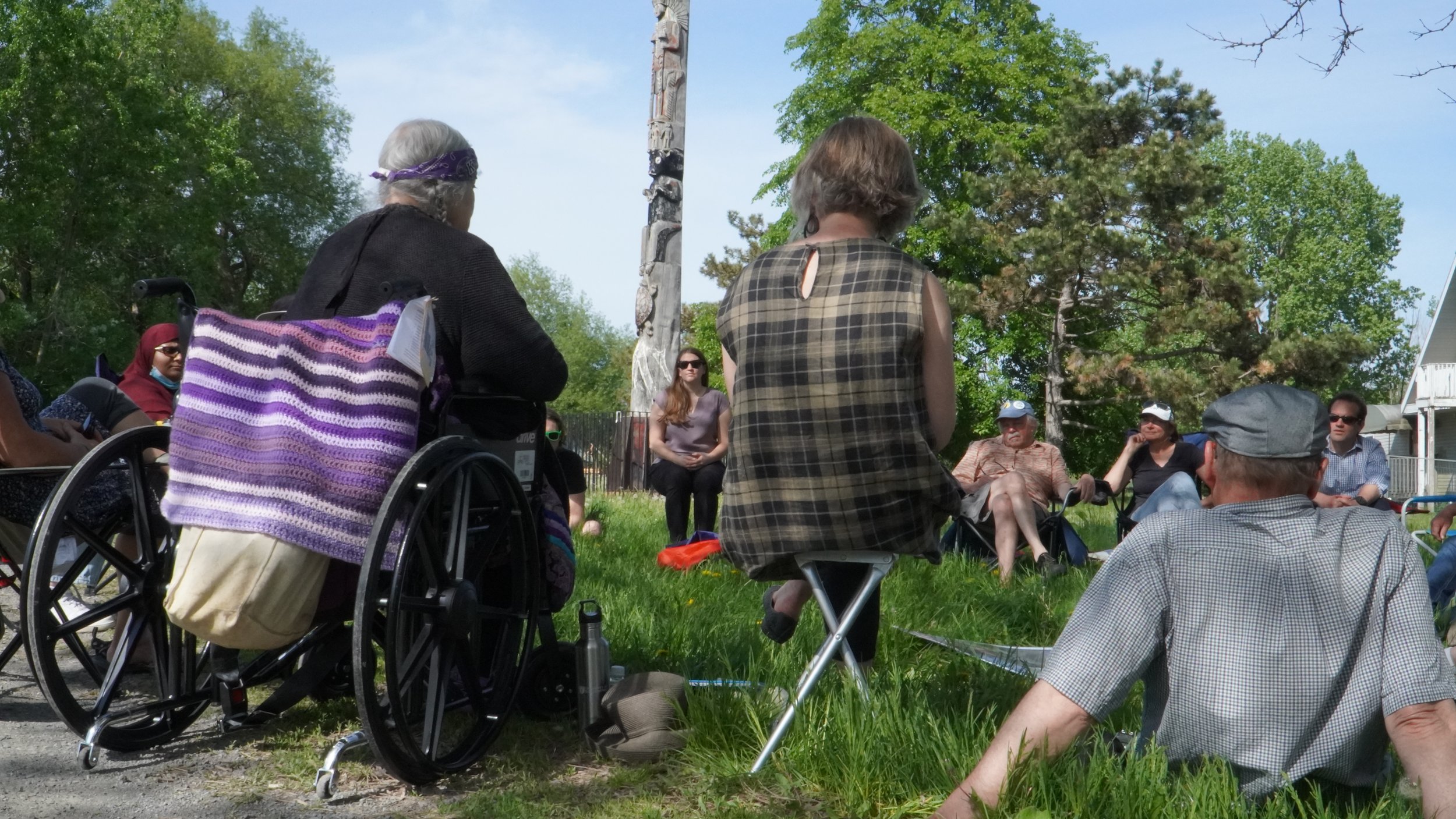


Park under Water 2019
In 2017 and 2019, climate change brought record high water levels to Lake Ontario: 75.88 m above sea level in 2017 and 75.92 above sea level in 2019. Adjacent waterways such as the Cataraqui River were affected too, and as a result, about a third of Belle Park was flooded, to the extent that for a couple of months in 2019, there was no land access to Belle Island. It was an occasion to think about how human interventions in wetlands (Belle Park) and waterways (The Saint Lawrence Seaway) cannot easily contain the force of water and also of human-caused global warming. See Laura Jean Cameron’s short essay, “Wet Places Getting Wetter.”
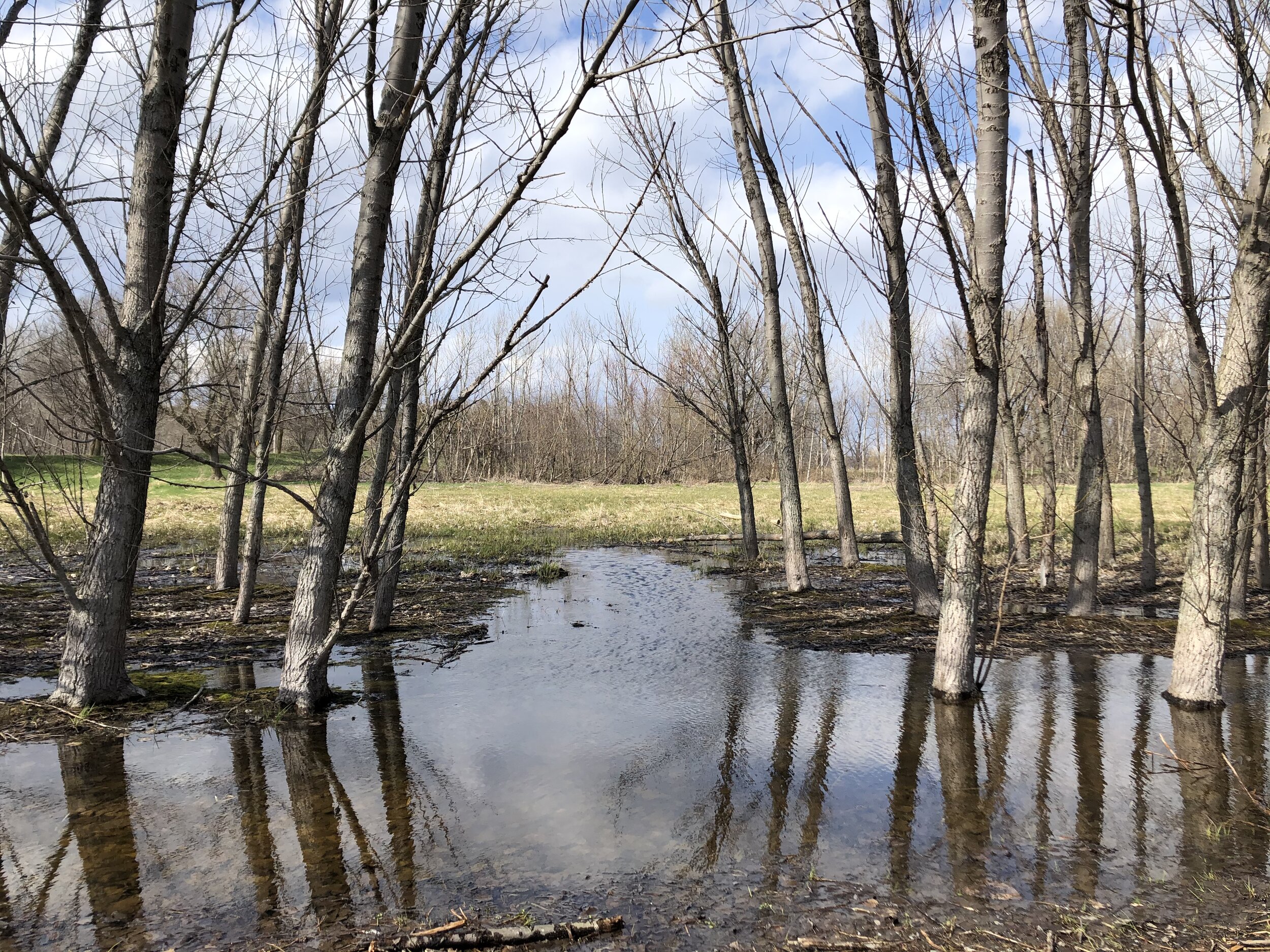
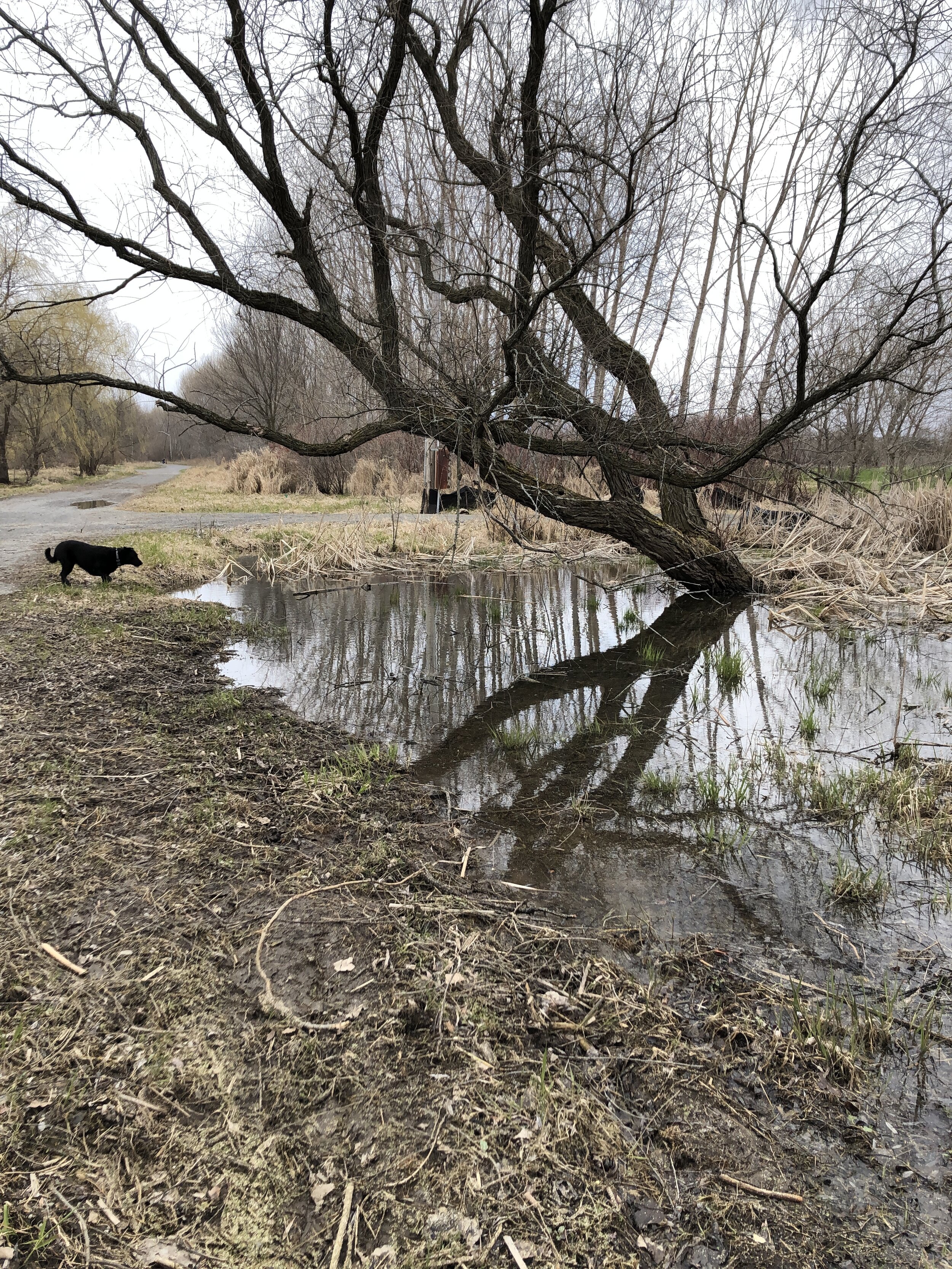
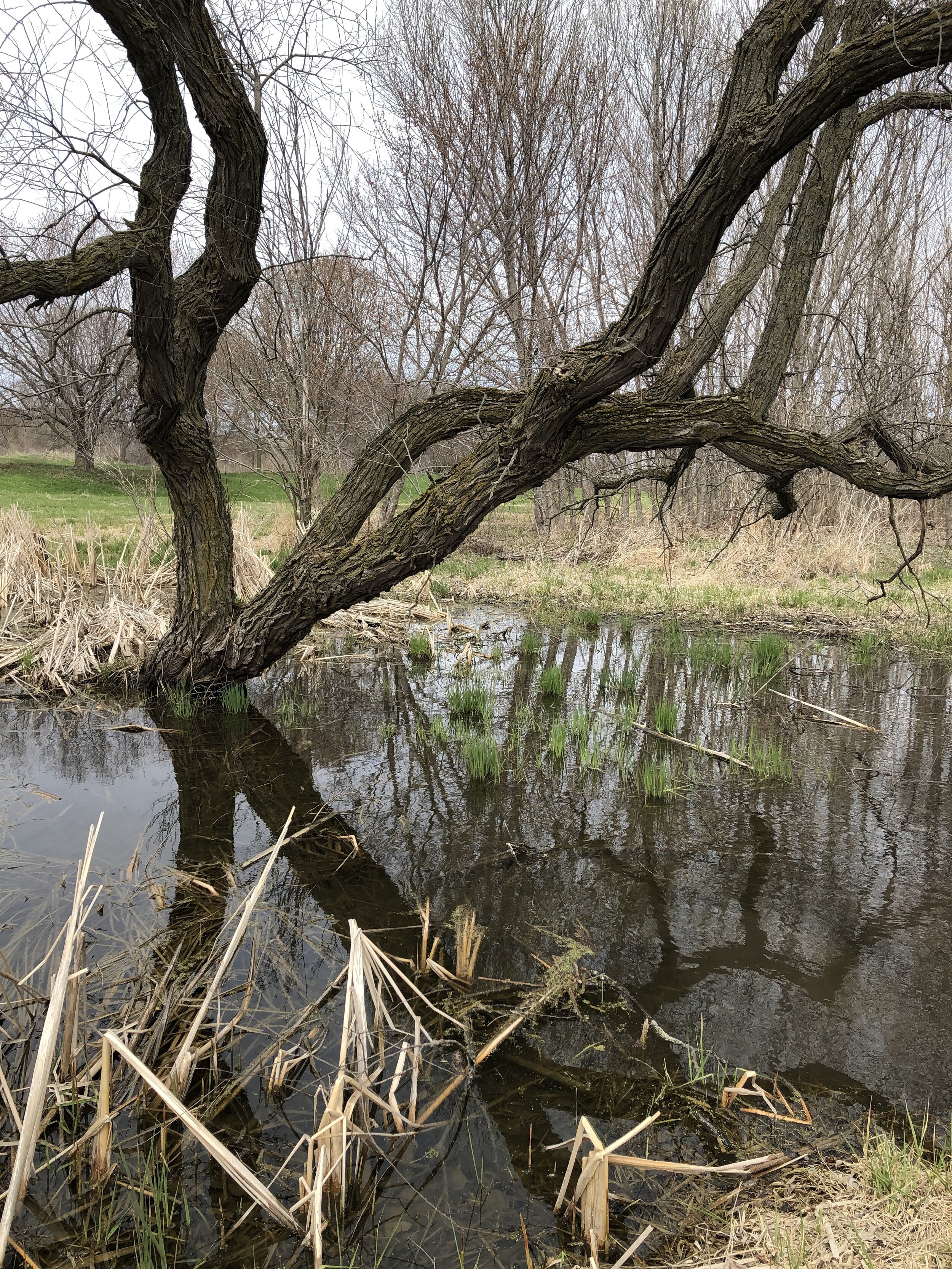
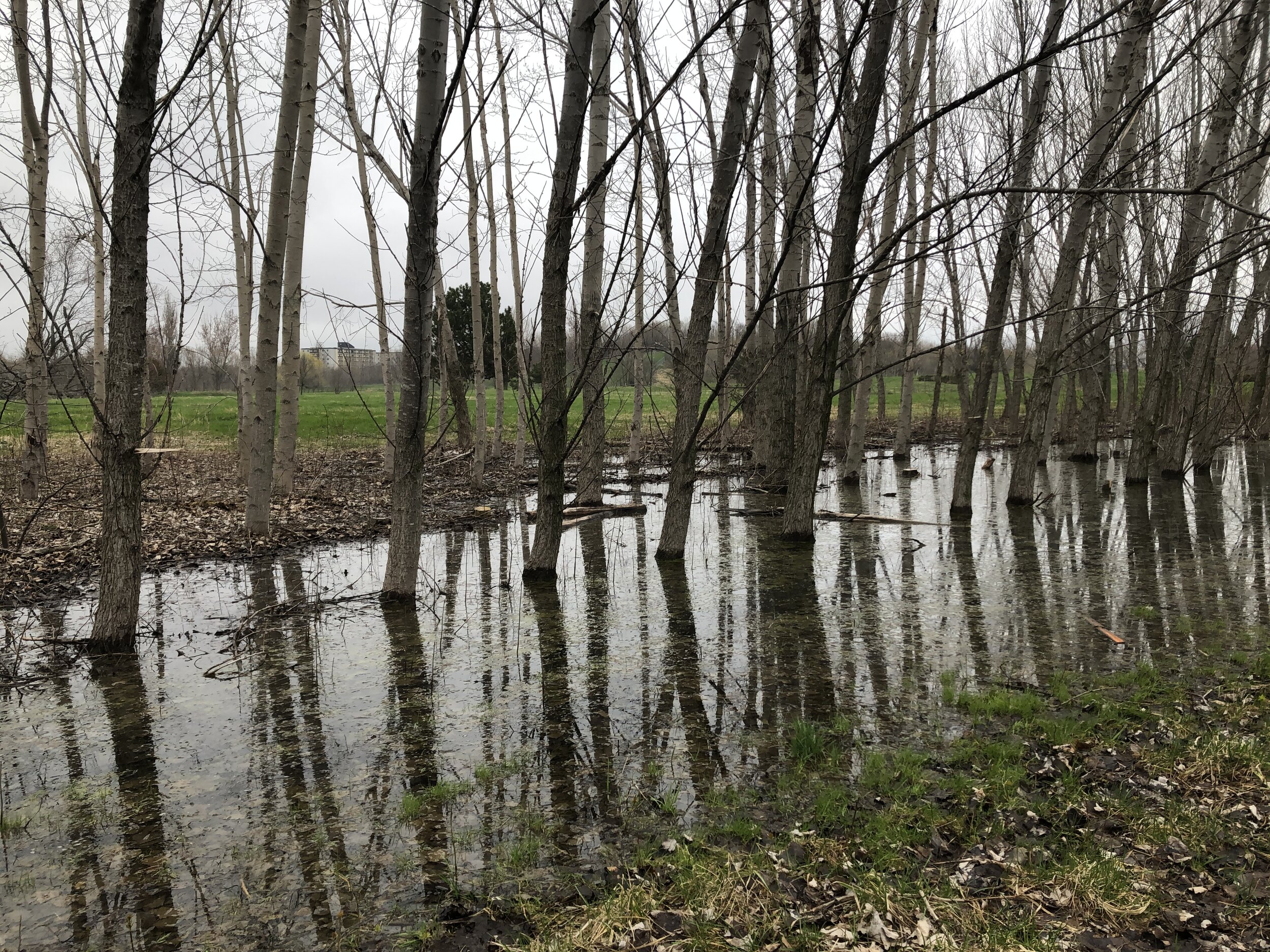
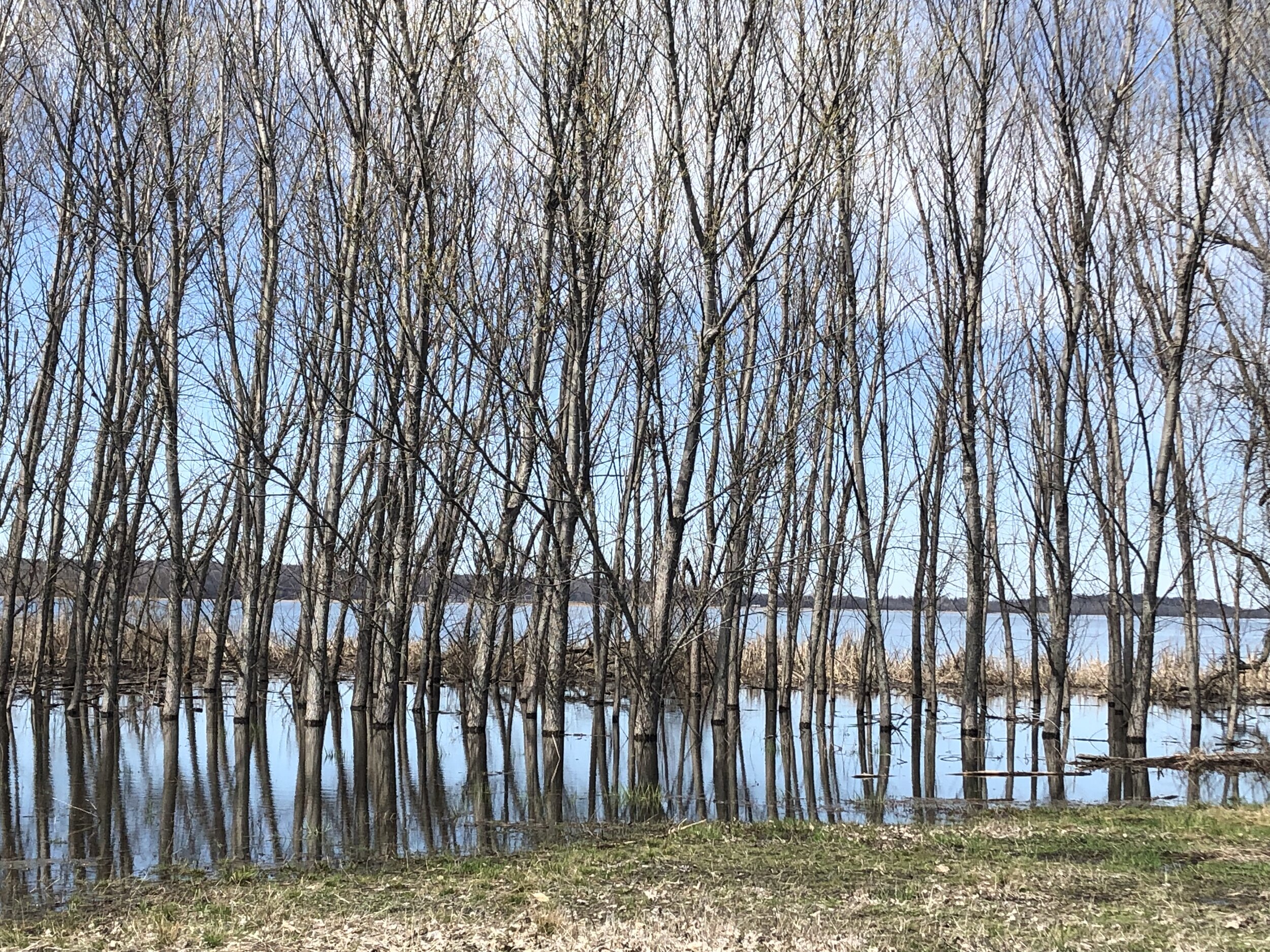
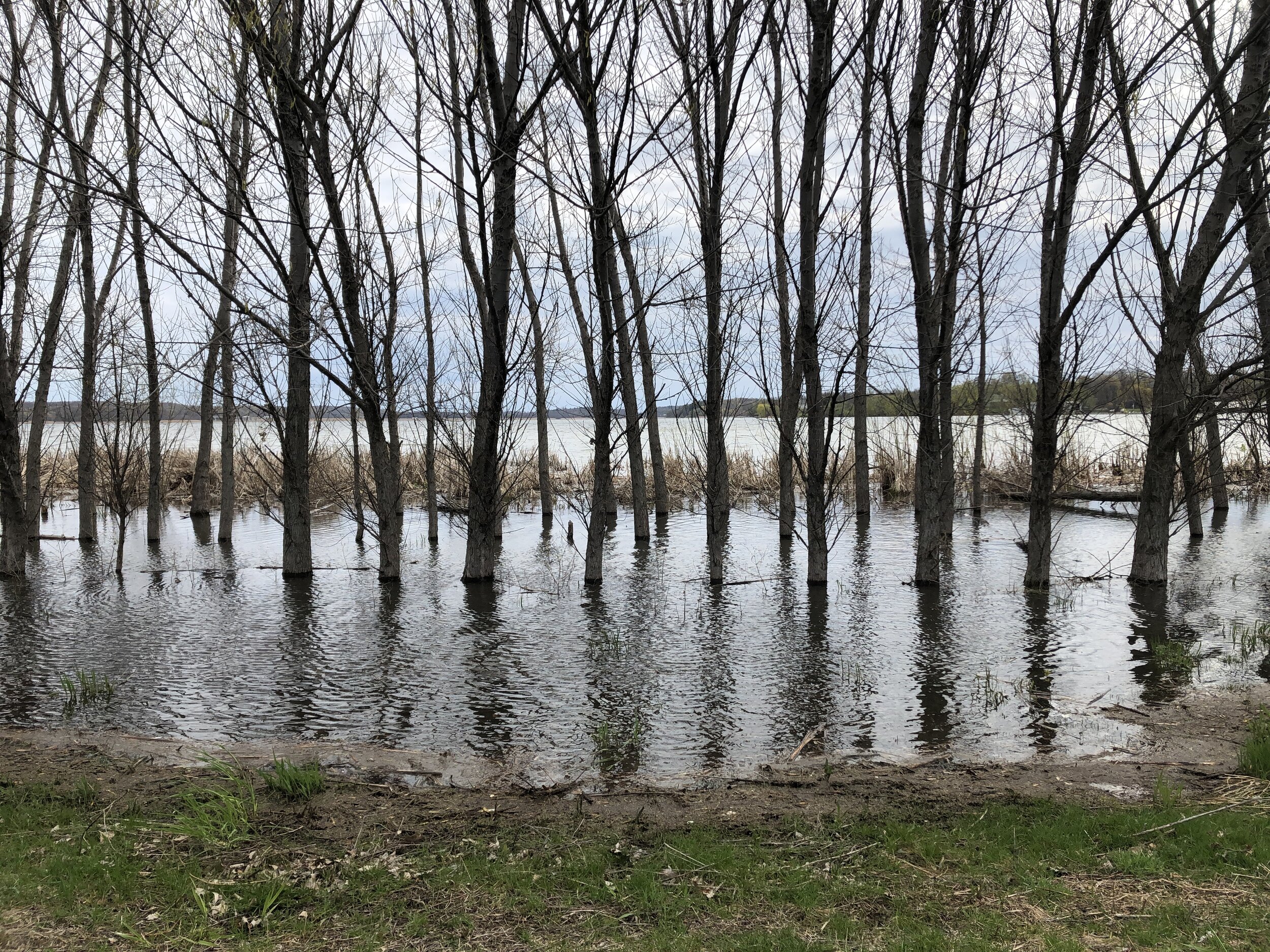
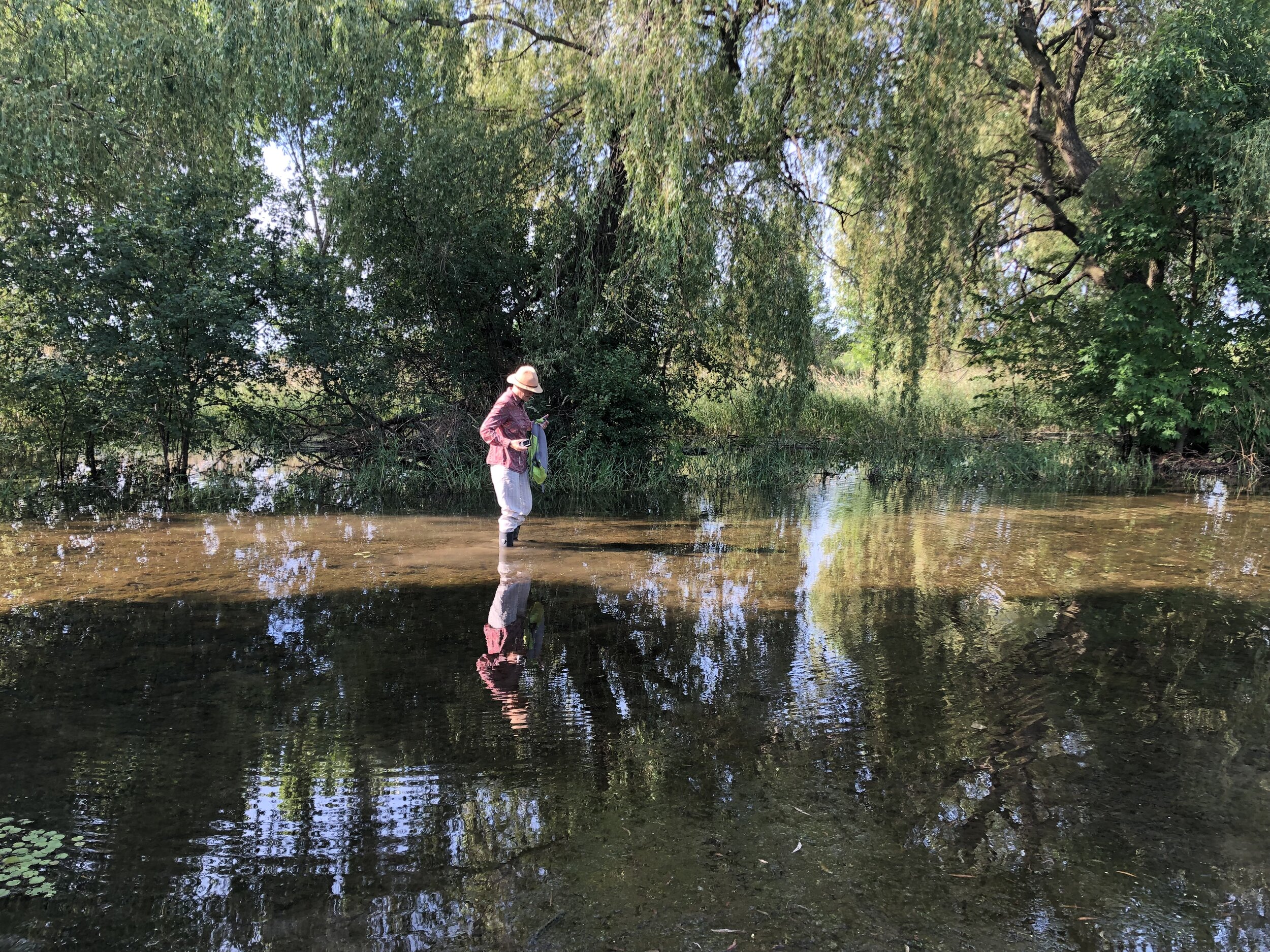
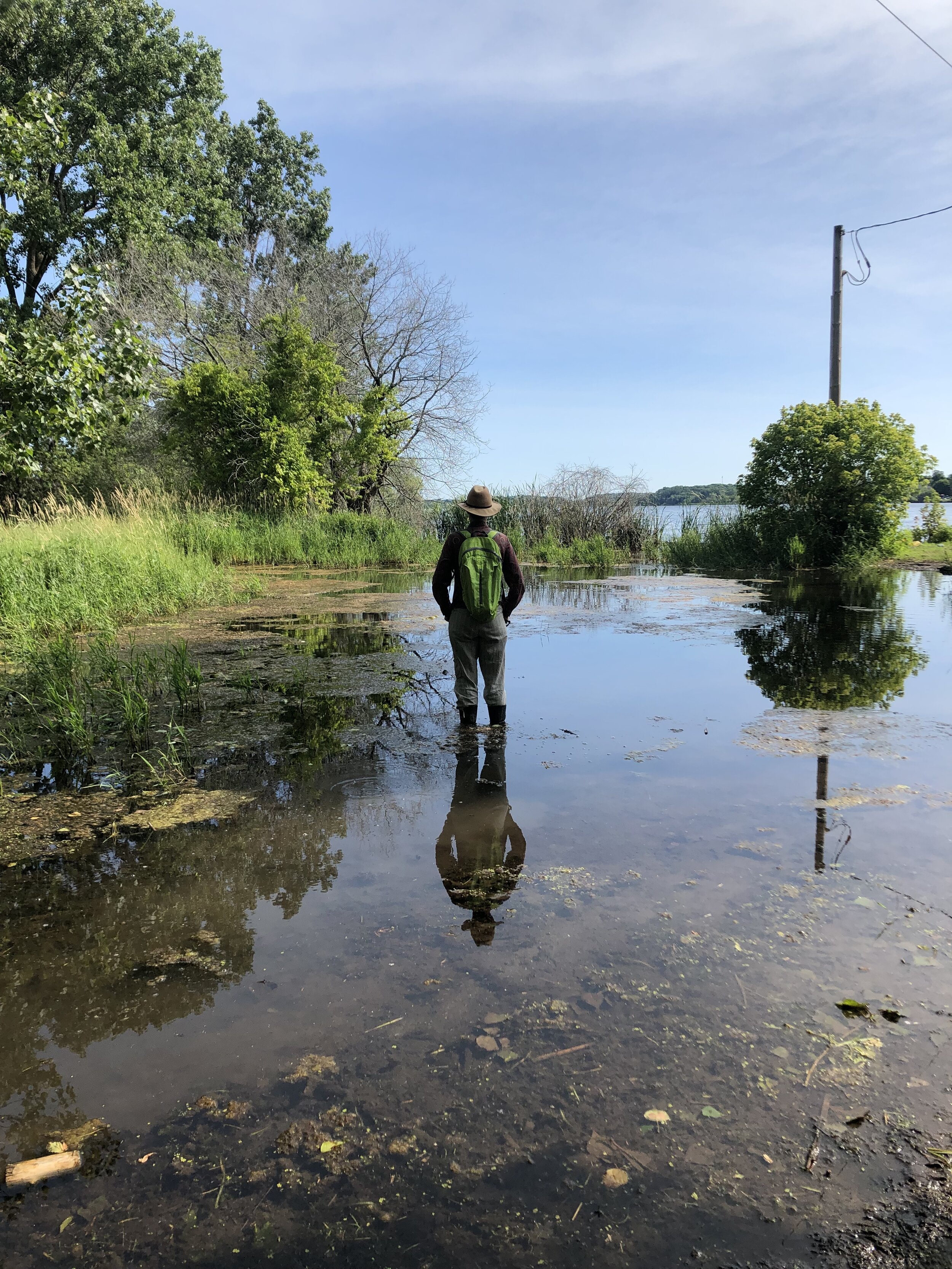
Remediation
In 1994 the Ministry of the Environment conducted a survey that found benzene, ammonia, and PCBs in the Cataraqui River at ten times more than is allowed. The city ignored the situation until a resident named Janet Fletcher sued the city and won. Since 2006 the city has been implementing a remediation plan, including testing the water a couple of times a week, dealing with leachate, and planting thousands of poplar trees, since poplars absorb toxins from the ground. It turns out that the beavers love the poplars, and there is a bit of a tug of war between the beavers and those in charge of remediation.
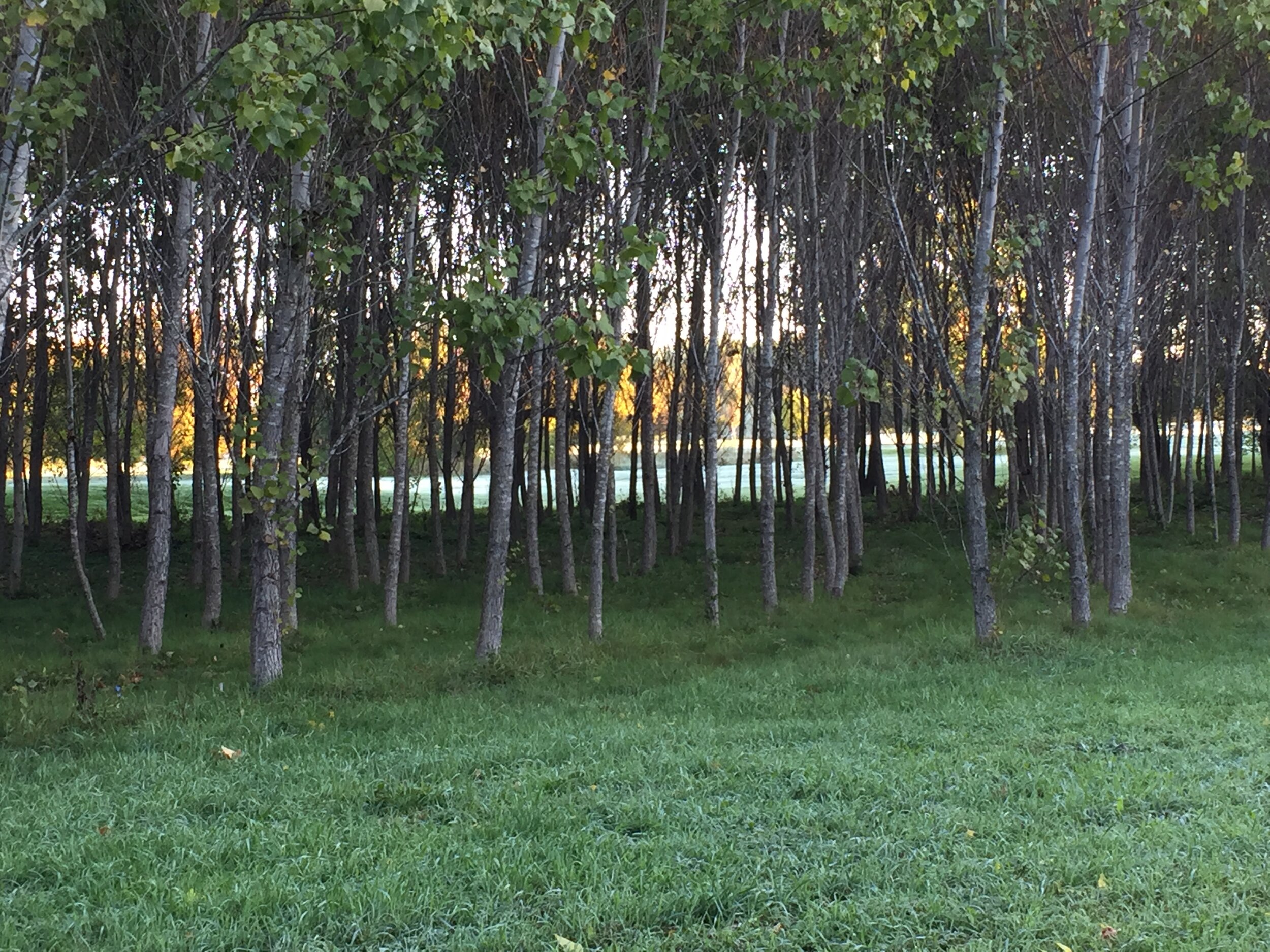


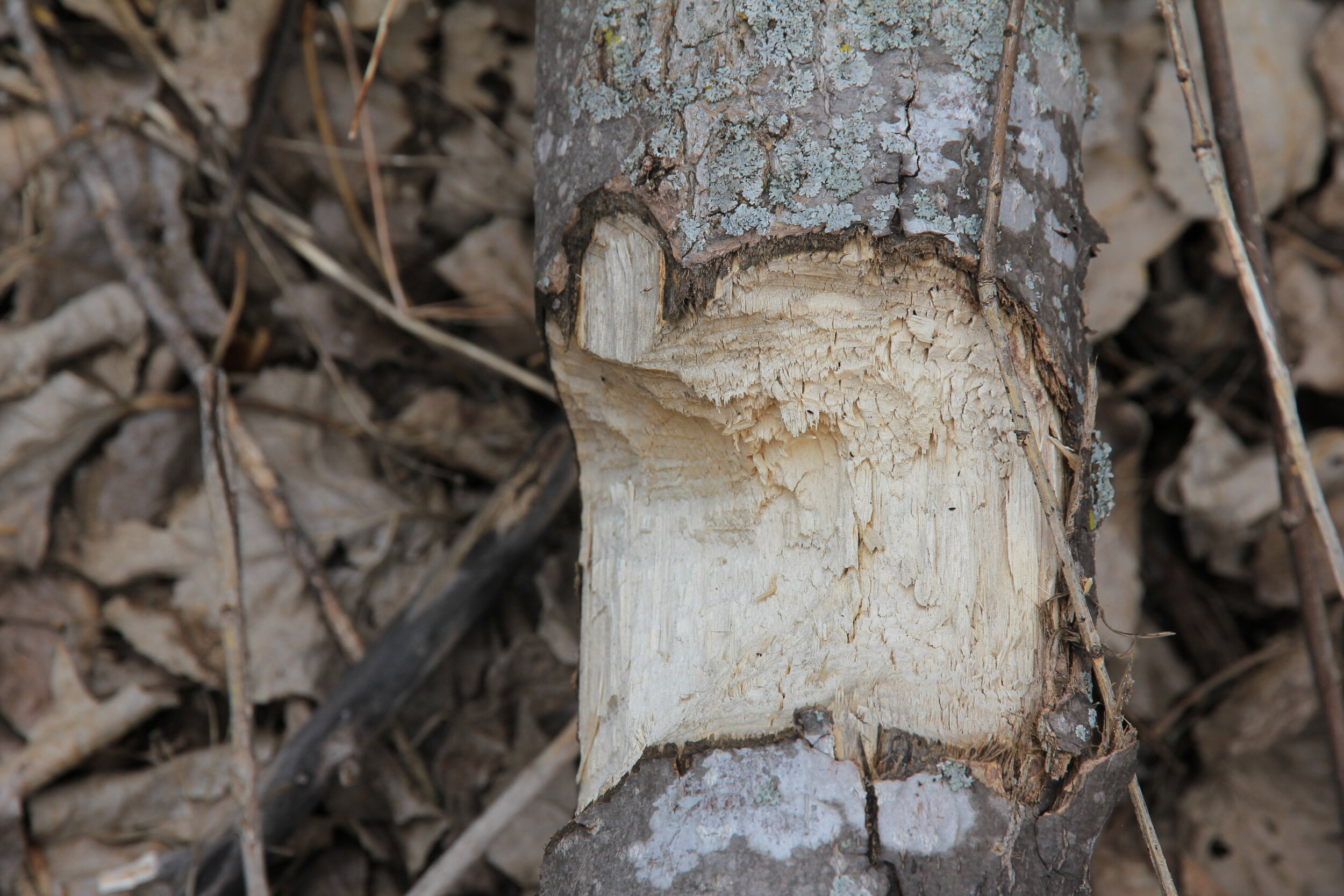
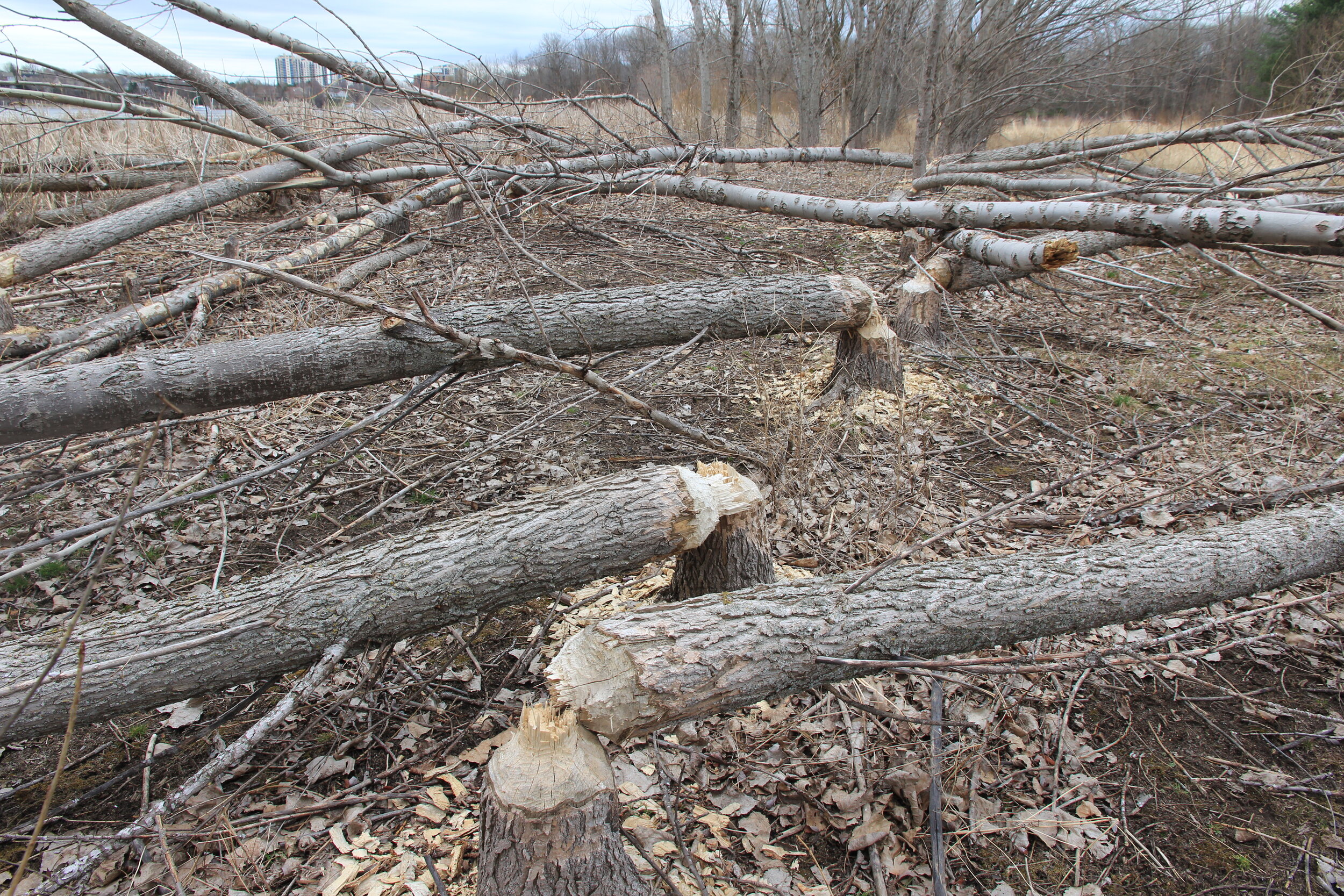



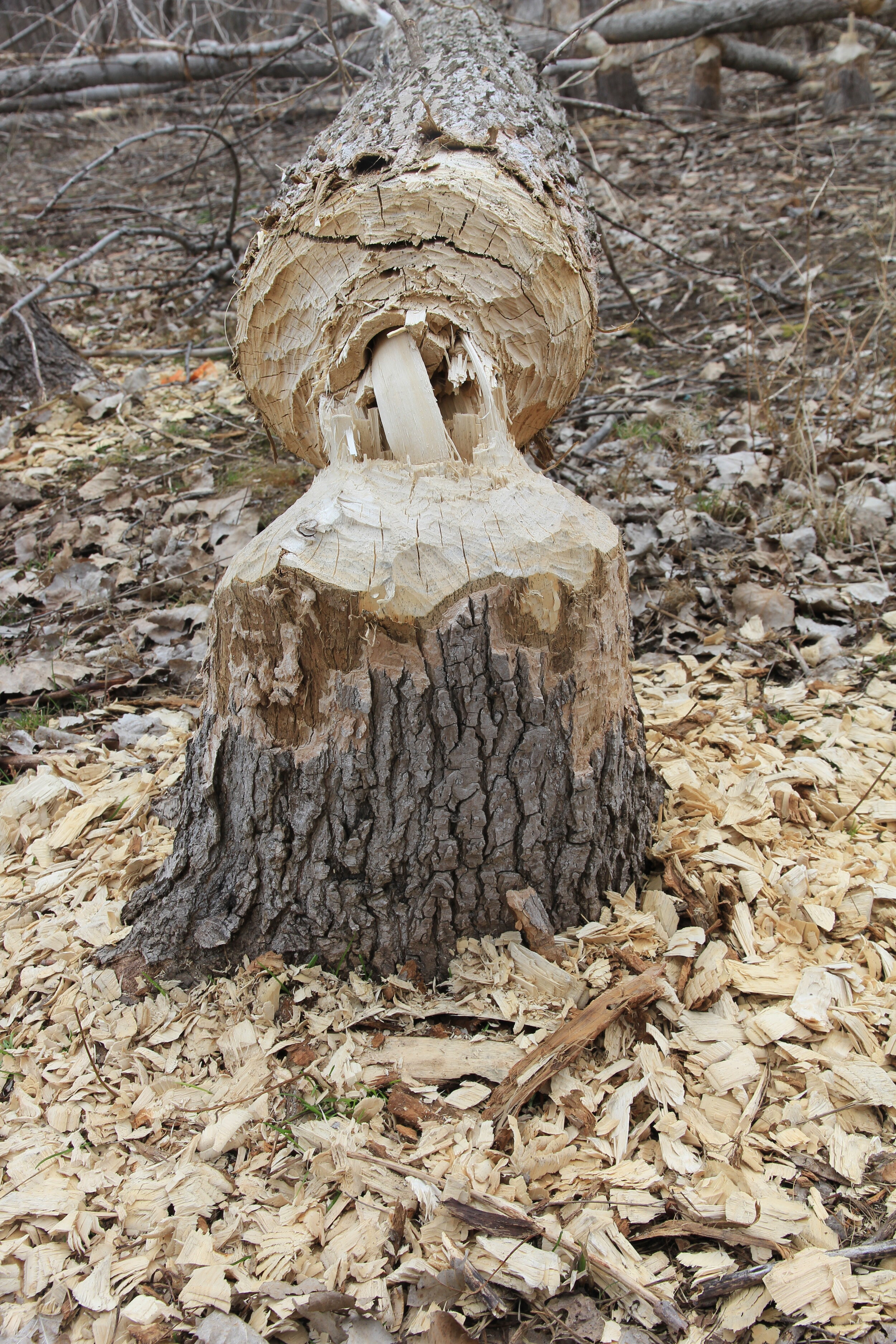

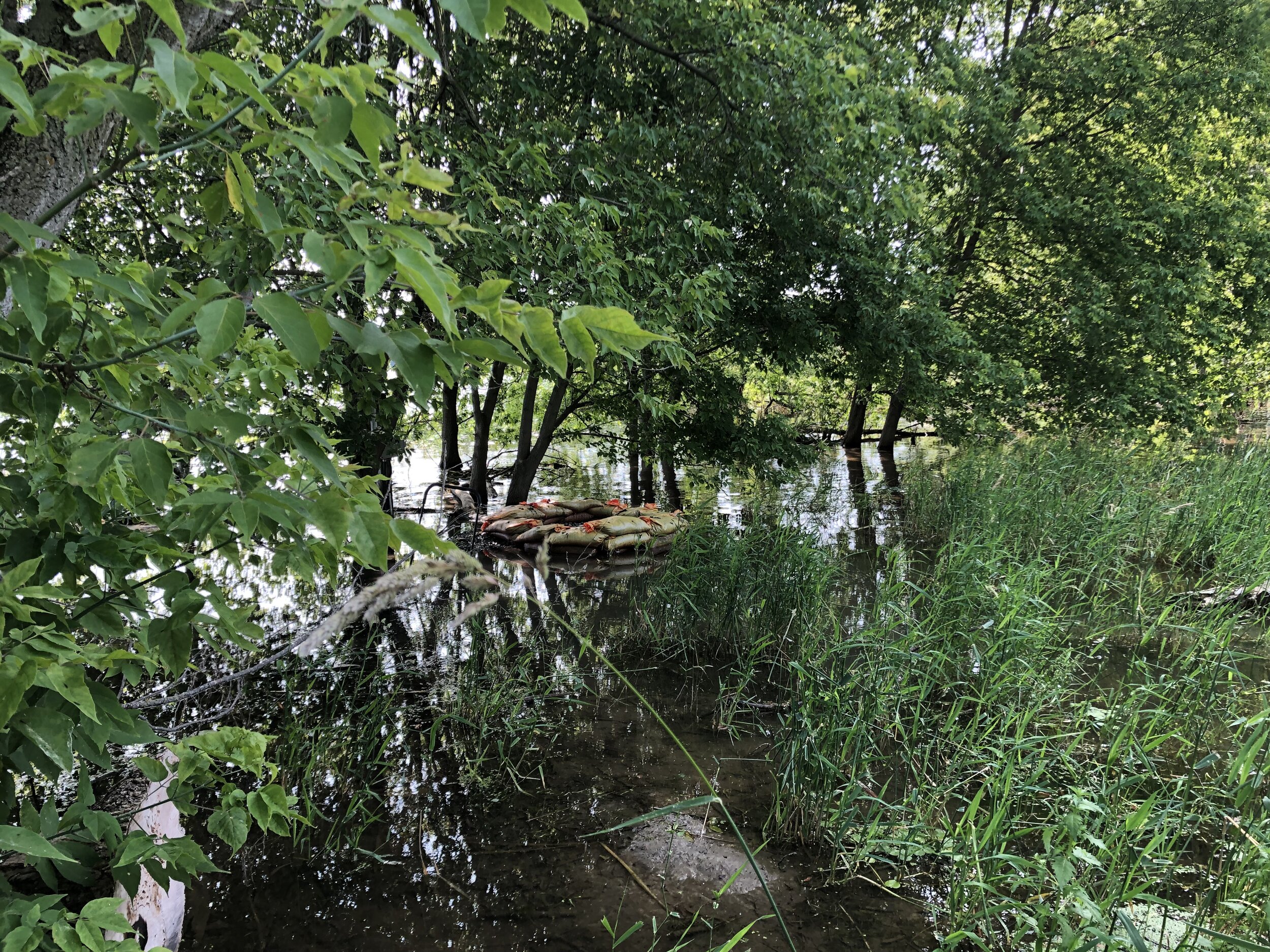
Weeping Willows
The park boasts a couple dozen Weeping Willows (S. babylonica and S. x sepulcralis), which are not native to Ontario. The Willows are majestic (they don’t encourage growth underneath them), and they like to be in wetlands, their roots serving an important role in preventing erosion and creating a stable environment.
